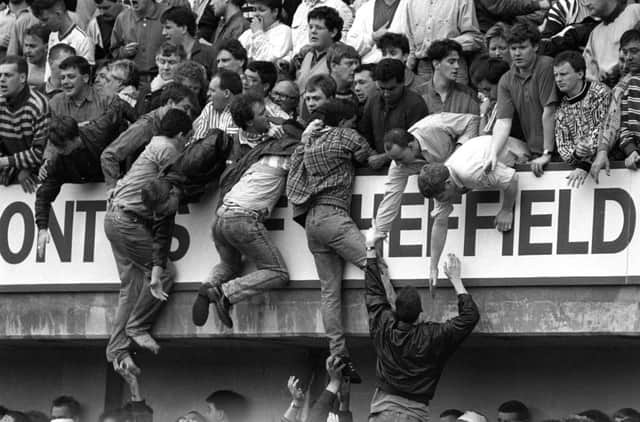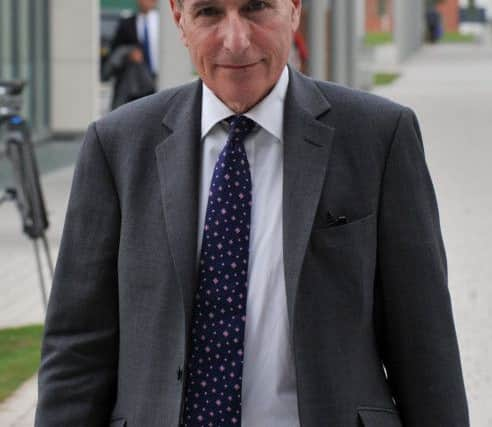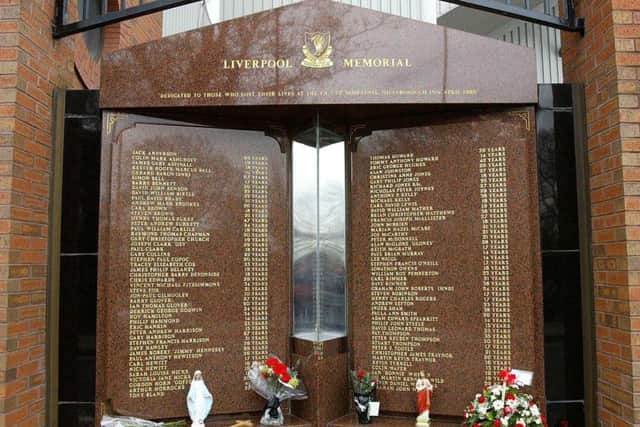Now jury must decide: Is Hillsborough police chief guilty of manslaughter?


Coroner Sir John Goldring told the seven women and three men of the jury today that at the end of the inquests lasting nearly two years, one of the key issues they will have to decide is whether the behaviour of South Yorkshire Police’s then Chief Superintendent amounted to a criminal act.
The English disease: How Leeds and Millwall fans were the scourge of football, by Hillsborough coroner
Advertisement
Hide AdAdvertisement
Hide Ad

But Sir John warned them before the top officer at the match on the day can be held responsible for causing, or being one of the causes of the catastrophe, they must be sure of a series of legal questions.
He suggested the jury may look at Mr Duckenfield’s professional background, his lack of experience as a commander of a big football match, and his preparation before the game as they make their deliberations.
They may also, Sir John suggested, look at his actions on the day before and after the fateful decision at 2.52pm when he ordered the opening of Gate C, allowing around 2,000 fans to flood into the already packed central pens behind the goal on Leppings Lane.
Advertisement
Hide AdAdvertisement
Hide AdMr Duckenfield at first did not say police had ordered the gate to be opened as rumours the fans had forced them open began to circulate - a “lie by omission”, he later told the hearing.


Around 50 relatives of victims sat in silence as Sir John began going through the legal directions before he will start three weeks of summing up the evidence.
The jury was given a 33-page questionnaire asking questions about the role of Mr Duckenfield, and including questions on the behaviour of the Liverpool fans, the police, emergency services and stadium safety.
But the sixth question involved directly Mr Duckenfield and his role in the disaster on April 15 1989, as the FA Cup semi final between Liverpool and Nottingham Forest kicked off.
Advertisement
Hide AdAdvertisement
Hide AdTo find the fans were unlawfully killed and Mr Duckenfield’s conduct was responsible, the jury was told they must answer four key questions.


Firstly, that as match commander he owed a duty of care to the 96 who died - and it is agreed by the former officer’s own lawyers that he did.
Secondly, that he was in breach of that duty of care - by analysing his conduct of what he did, did not or should have done before and on the day.
Thirdly, they must be sure his breach of duty caused or contributed to the deaths “not merely in a minimal way”.
Advertisement
Hide AdAdvertisement
Hide AdFinally, the jury must be sure that Mr Duckenfield’s breach of duty of care as the match commander was so bad it amounted to “gross negligence”, so bad it was equal to a criminal act or omission.


Unless they are sure on all the four questions they should not conclude the fans were unlawfully killed, jurors were told.
Referring to Mr Duckenfield’s “lie by omission”, Sir John told jurors they had to be sure he deliberately lied and, if they were sure, then ask themselves why.
He said: “If it may have been for a reason, such as panic or because he was fraught or not thinking clearly, or because he was afraid that, at the time, stating the gates had been opened by the police might run the risk of public disorder, then the lie does not help you say whether he was responsible for any critical mistakes before the disaster.
Advertisement
Hide AdAdvertisement
Hide Ad“If, on the other hand, you were sure that he deliberately lied because he knew that as a result of his order to open the gates he was responsible for the crushing in the pens and the disaster which was unfolding and he was subsequently trying to blame the fans, then the lie becomes relevant.”
Sir John said there was “no dispute” that each of the 96 Liverpool fans suffered fatal injuries from a crush in the West Stand of Hillsborough Stadium but jurors would have to consider the surrounding circumstances which may have contributed to deaths.
Addressing the jury of seven women and three men, Sir John said: “We have heard a great deal of most moving and distressing evidence.
“We would not be human if we did not feel powerful human sympathy for those touched in their different ways by the disaster and its aftermath.
Advertisement
Hide AdAdvertisement
Hide Ad“It is particularly impossible not to feel great sympathy for those who lost loved ones or to have been moved by what we heard about each of those who died, during the course of the inquests.
“There is also some evidence on the effect of the disaster on some of those who responded.
“I must give you this clear warning. I suspect it will come as no surprise.
“Whatever your feelings you must put them to one side.
“You have to address the evidence dispassionately and without emotion.
Advertisement
Hide AdAdvertisement
Hide Ad“Your findings should be based on that dispassionate assessment of the evidence you have heard.
“You should not make critical findings unless they are justified by the facts.
“However, you should not shrink from making such judgments if there.”
The coroner re-emphasised the advice he gave to the jurors at the start of the inquests in that they should put out of their mind anything they had read, heard or discussed about the disaster.
Advertisement
Hide AdAdvertisement
Hide AdHe added they should also ignore any media coverage in the following weeks and concentrate solely on the evidence heard in the courtroom.
He told the jury their final determinations on the balance of probabilities could not decide any question of criminal liability or civil liability on the part of a named person.
The coroner said: “While you can make important, robust and judgmental findings about how a person died, you cannot find any person guilty of a criminal offence. Neither can you find that person was, for example, negligent.”
He said he required them to perform three tasks - fill in an individual questionnaire for each of those who died, fill in a general questionnaire and complete a record of inquest containing personal information about those who died.
Advertisement
Hide AdAdvertisement
Hide AdThe general questionnaire, split into 14 sections, asks about the underlying factors “which may have played a part in the disaster”.
The coroner explained: “Whether, for example, opportunities were lost which might have prevented it or have saved lives.”
Individual questionnaires would focus on the medical cause of death and time of death.
The former Court of Appeal judge, acting as Assistant Coroner for South Yorkshire (East) and West Yorkshire (West), is expected to take up to three weeks to sum up the evidence.
Advertisement
Hide AdAdvertisement
Hide AdThe inquests will then adjourn for the half-term break in mid-February and are due to reconvene on February 22 when the jury is expected to be sent out to reach its determinations.
The tragedy unfolded on April 15 1989 during Liverpool’s FA Cup tie against Nottingham Forest as thousands of fans were crushed on Sheffield Wednesday’s Leppings Lane terrace.
The 1991 verdicts from the original inquests were quashed following the damning 2012 report of the Hillsborough Independent Panel, which concluded there was a cover-up that attempted to shift the blame for the tragedy on to its victims.